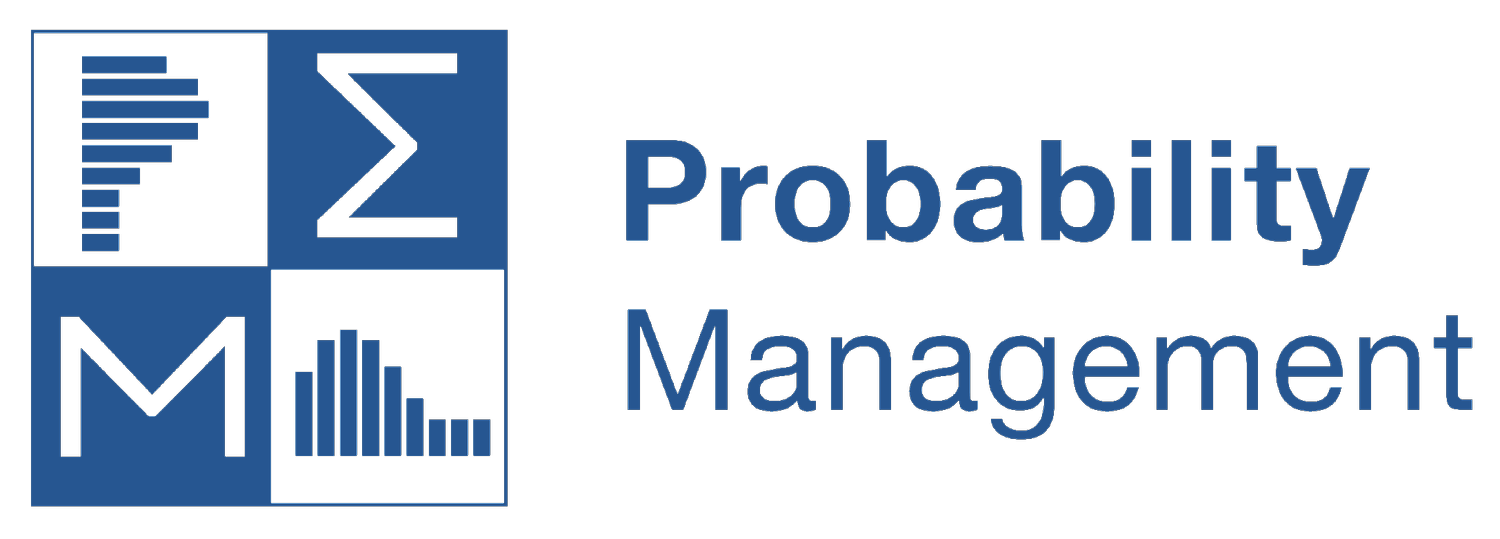Recognize, Reduce, Respond
By Dr. Sam L. Savage
Just as Readin’, ‘Ritin’, and ‘Rithmetic were the pillars of public education, as encouraged in the United States in the early 1800’s, the Chance Age will require its own foundational elements.
I offer you Recognize, Reduce, and Respond.
Recognize
Those who do not recognize uncertainty run afoul of the Flaw of Averages or worse.
I used to think there was nothing worse than representing uncertainties as single numbers until I saw it done with colors.
With the advent of the discipline of probability management, once you recognized a set of uncertainties, you could store them as auditable data (SIPs and SLURPs) that preserved statistical coherence. This unlocked the arithmetic of uncertainty the way Hindu/Arabic numerals unlocked standard arithmetic. Yet even today many professionals do not realize that uncertainties may be added, subtracted, multiplied or divided.
Reduce
In general, reducing uncertainty is a good thing. Forecasts of future prices, costs and demands usually include something called the Standard Error, which is an indication of how much uncertainty remains. If you come up with a way to consistently forecast tomorrow’s stock prices with a lower standard error than anyone else’s forecast, congratulations. You will be the richest person who ever lived.
This subject is guided by the Theory of the Value of Information as discussed in Ch. 15 of my book on the Flaw of Averages and also by Doug Hubbard’s Applied Information Economics.
One important exception to the value of reducing uncertainty is in the area of stock options, in which the value goes up with the uncertainty of the underlying stock price. How cool is that? To survive in the Chance Age, you need to understand the power of options as discussed in Ch. 25, Options: Profiting from Uncertainty, and Ch. 30, Real Options in the Flaw of Averages.
Respond
When you’re uncertain, don’t just stand there, do something! But you must do something that explicitly recognizes the uncertainty you face. Making rational decisions in the face of uncertainty is the realm of Decision Analysis, in which my father, Leonard Jimmie Savage played a role. Decision analysis came of age before the widespread use of computers and assumed relatively simple yes/no decisions of the form, “Do I buy an umbrella in the face of a 15% chance of rain tomorrow?” Shortly after I became an Adjunct in Stanford University’s School of Engineering, I took a class in Decision Analysis from Professor Ron Howard. It was not rocket-science, but life altering in its simple applicability as I describe in Ch. 14 of the Flaw of Averages.
Harry Markowitz, who credits my dad for indoctrinating him with rational expectation theory at point blank range at the University of Chicago, made a Nobel Prize winning contribution on how to respond to uncertainty. His famous efficient frontier displayed rational choices of portfolios of stocks with uncertain returns for investors with any risk appetite. The discipline of probability management is indebted to Harry for his generous efforts in getting 501(c)(3) nonprofit ProbabilityManagement.org off the ground.
With the rapid evolution of computers, vastly more complex decisions could be made with thousands of variables using the methods of Stochastic Optimization. I applied this response to the uncertainty of oil exploration at Royal Dutch Shell in 2006. As a matter of fact, stochastic programming employs arrays of coherent Monte Carlo trials that are mathematically equivalent to the SIPs and SLURPs of probability management. At first, all probability management did was to come up with standard formats for these arrays so they could be shared between applications, including corporate databases used for merely recognizing uncertainty. So, in a sense, probability management is just stochastic optimization without the optimization.
Conclusion
As your organization enters the Chance Age you will hopefully work your way through the three R’s. Nearly every enterprise stands to benefit in some way or another from recognizing, reducing, and responding to uncertainty.
Copyright © 2023 Sam L. Savage


